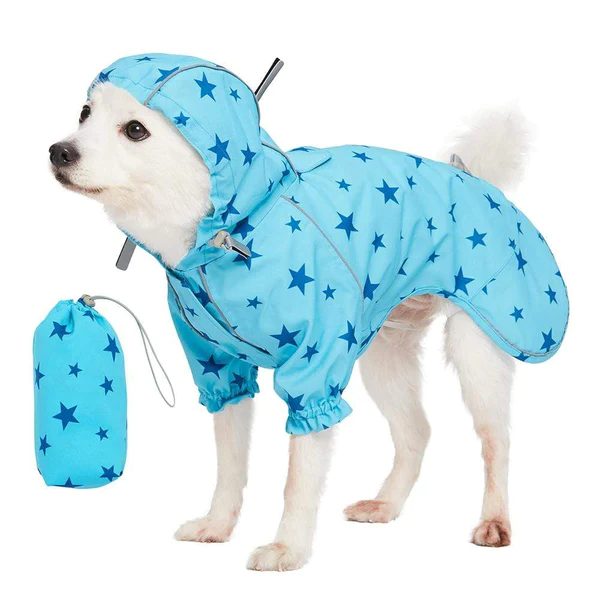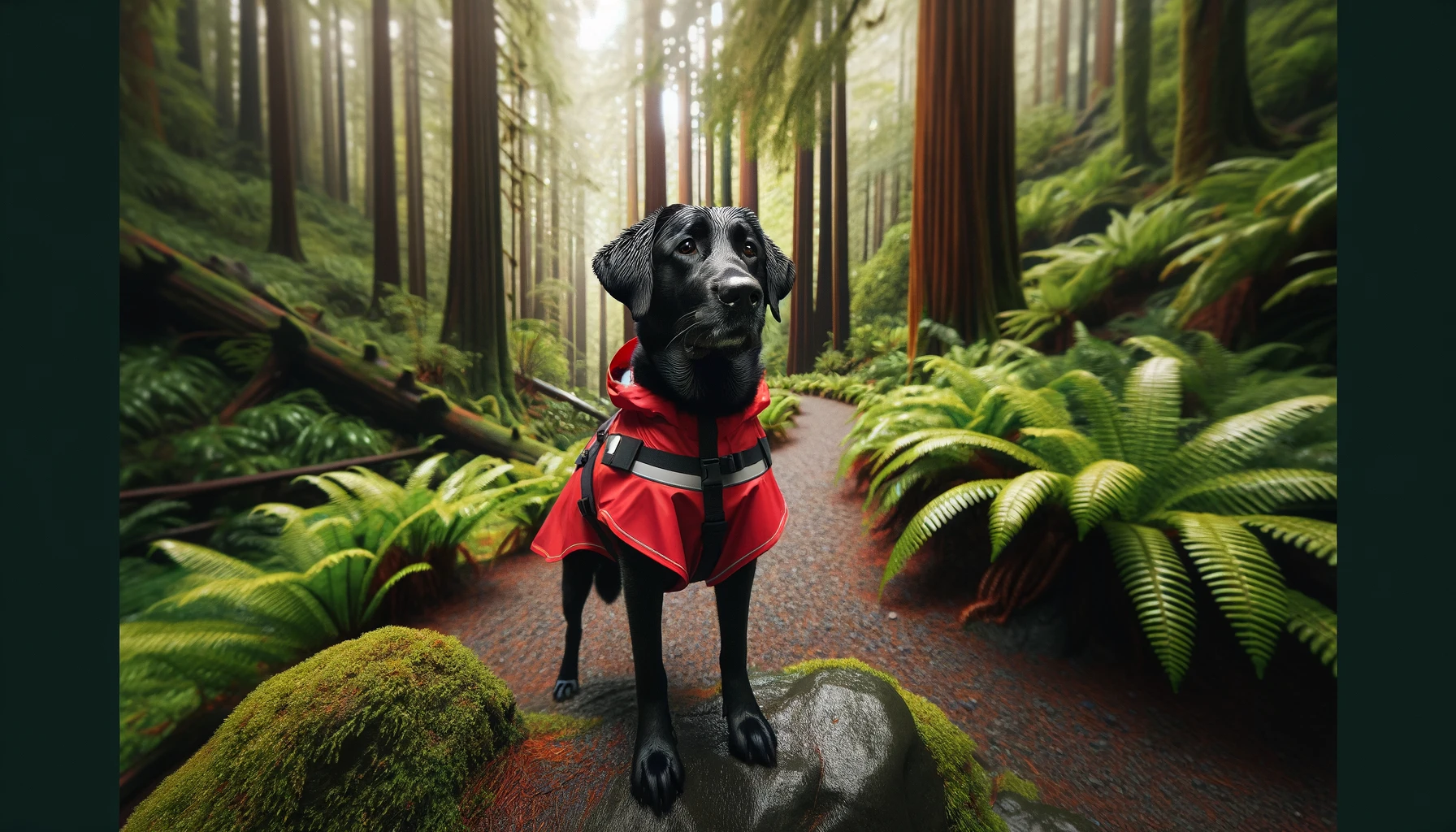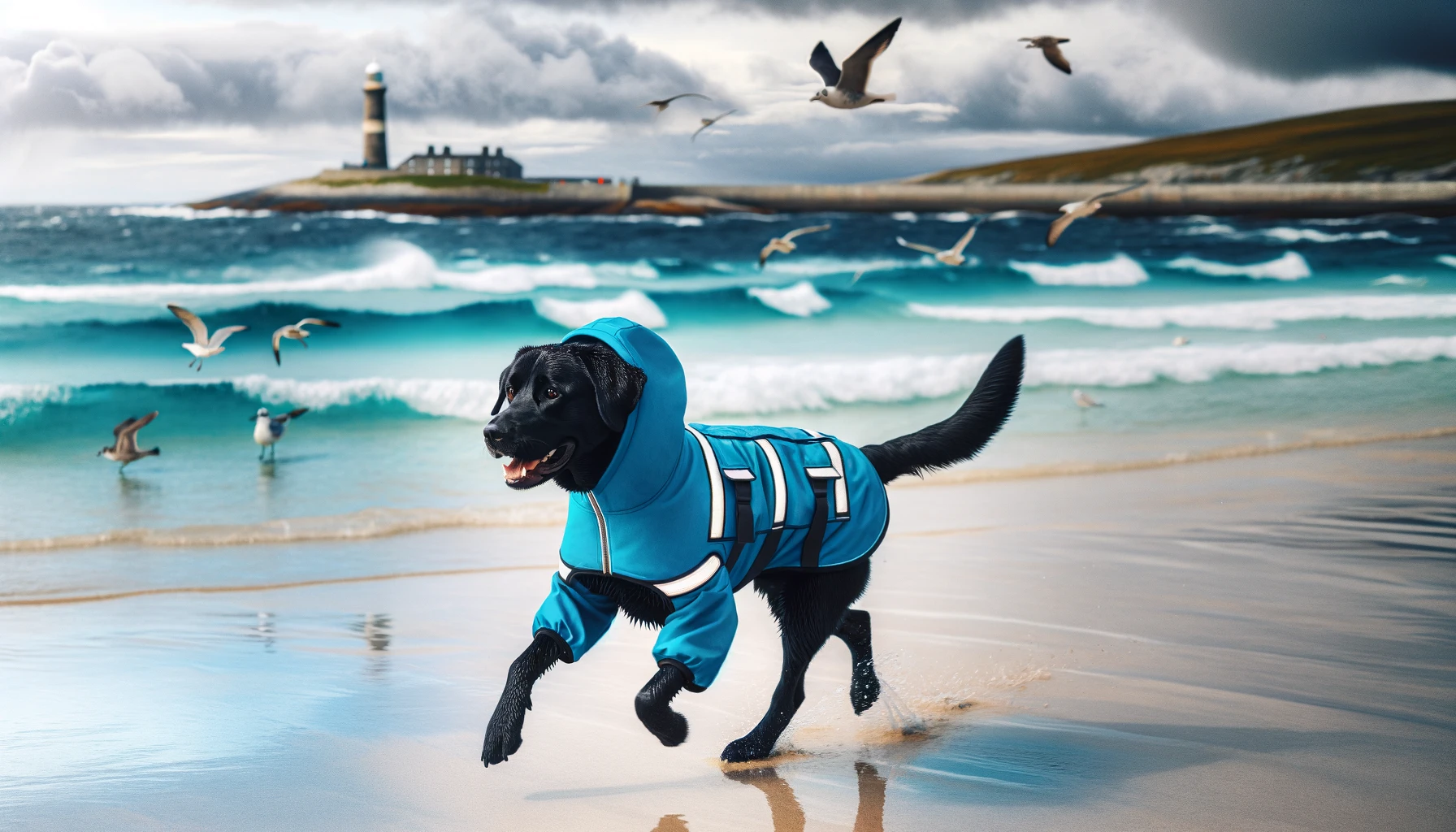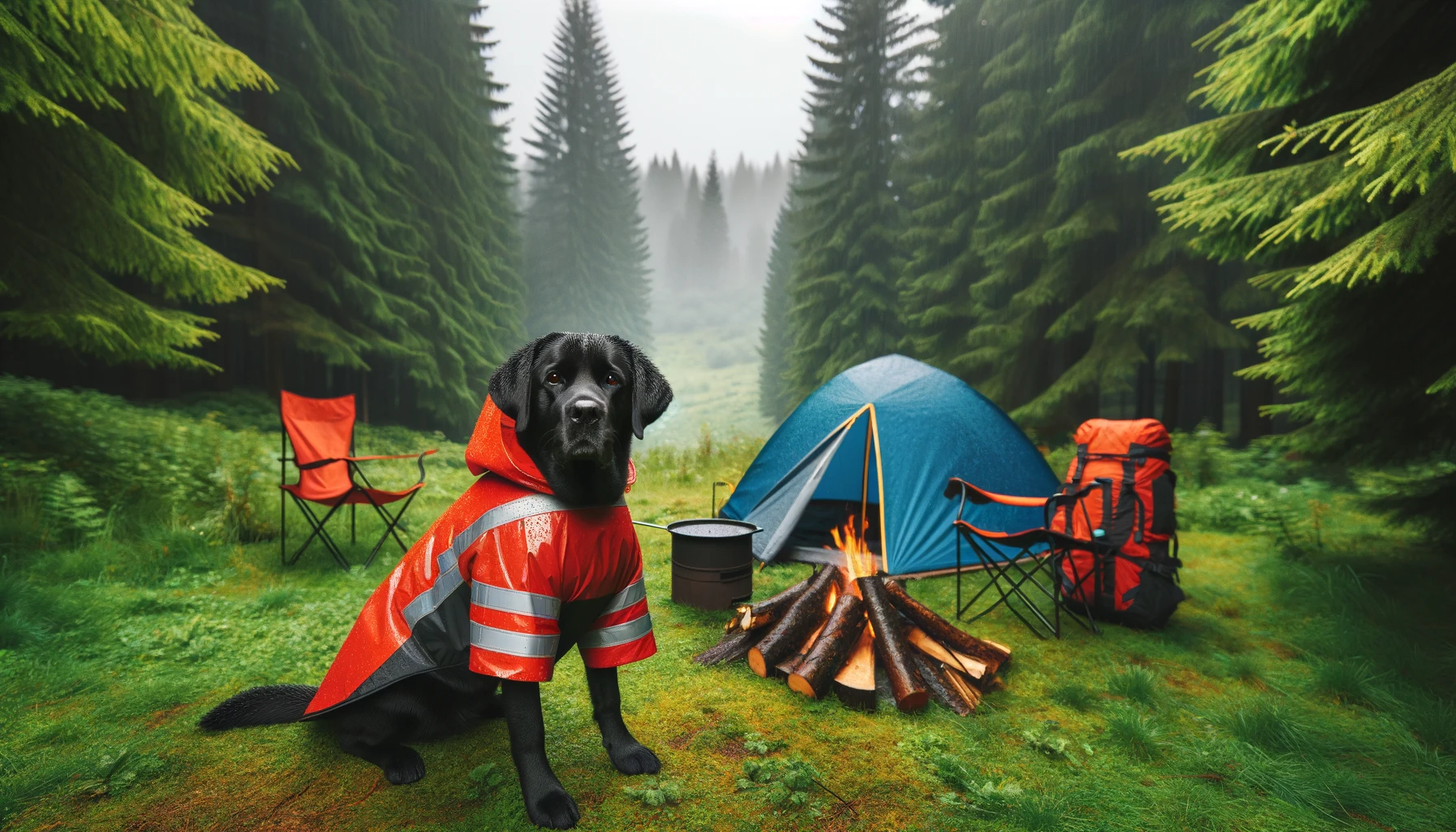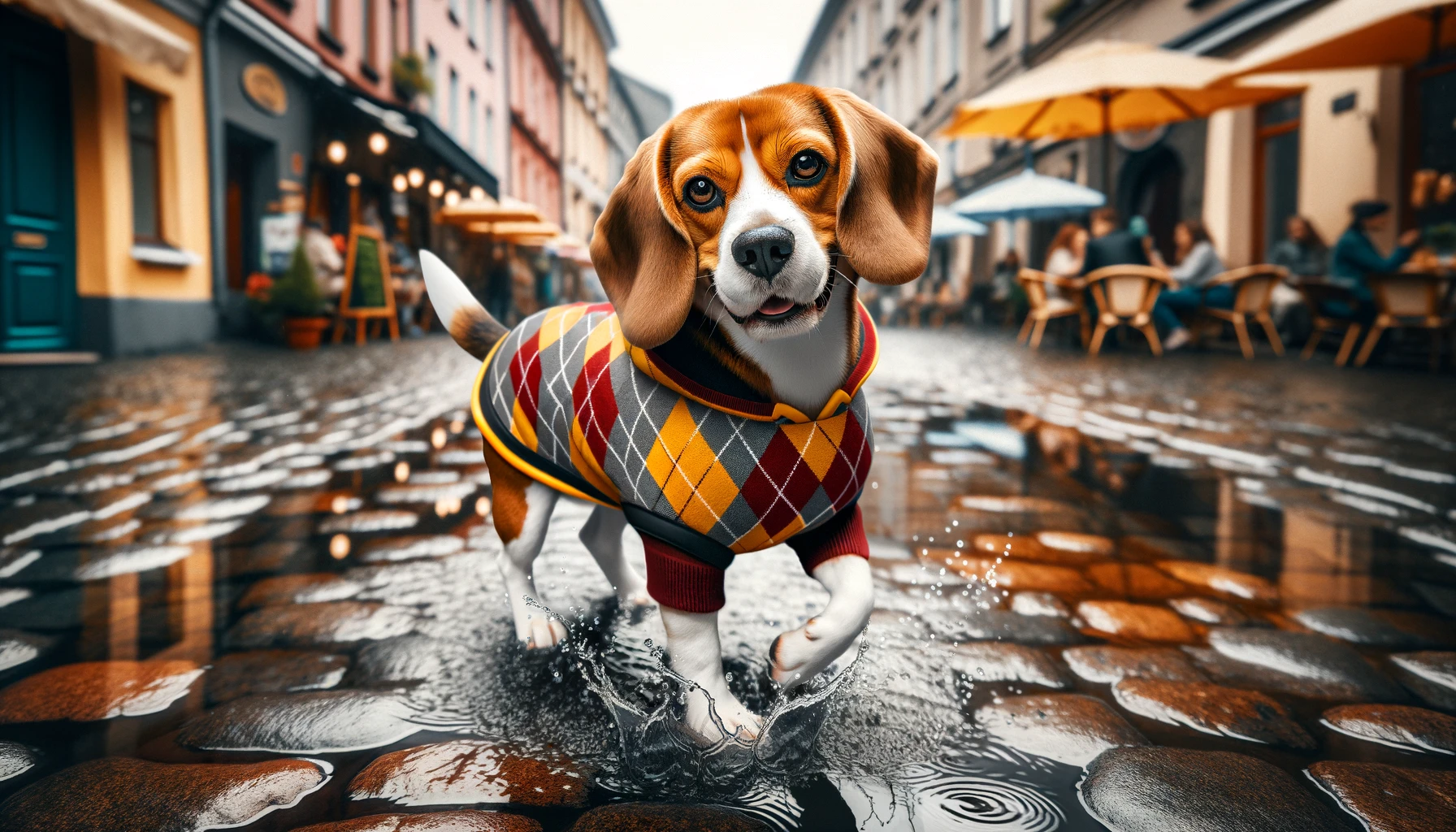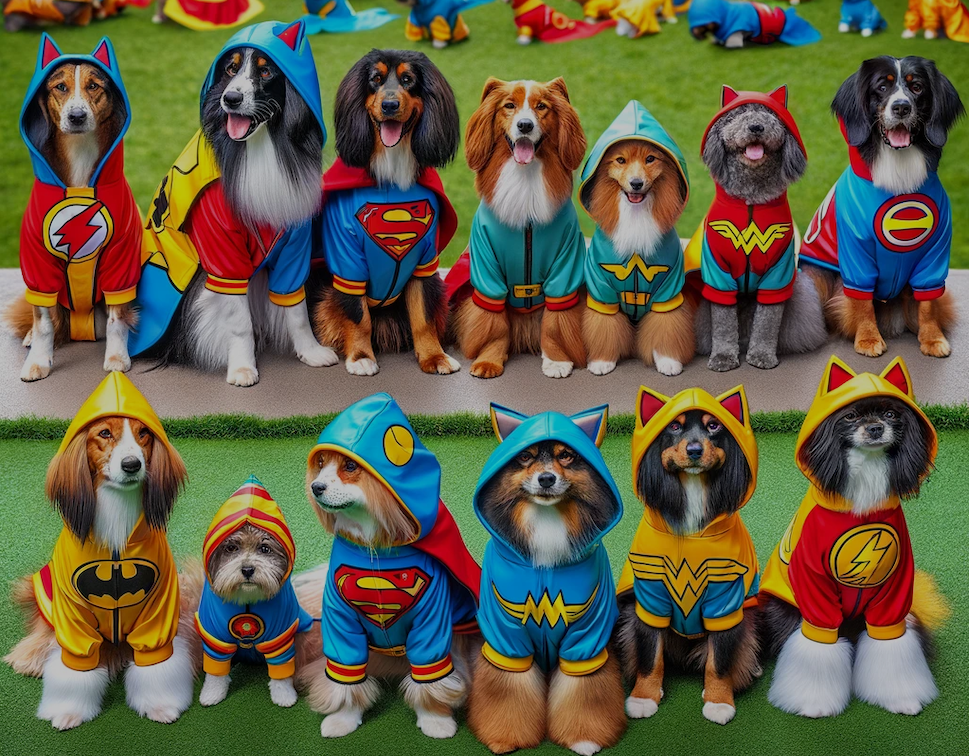As a loving dog owner, you want to ensure your furry friend stays dry and comfortable during those inevitable rainy walks. Choosing the right raincoat is essential, but with so many options available, it can be overwhelming. One of the most important factors to consider is the raincoat material – specifically, whether it’s waterproof or water-resistant. In this comprehensive guide, we’ll dive deep into the world of dog raincoat materials, helping you make an informed decision that will keep your pooch happy and dry, no matter the weather.
Why Invest in a High-Quality Dog Raincoat?
Before we explore the various raincoat materials, let’s discuss why investing in a high-quality dog raincoat is crucial:
- Comfort: A well-designed raincoat will keep your dog dry and comfortable during wet weather, preventing the discomfort and potential health issues associated with prolonged exposure to cold and damp conditions.
- Health: Wet fur can lead to skin irritation, fungal growth, and even hypothermia in extreme cases. A raincoat acts as a barrier, protecting your dog’s skin and coat from the harmful effects of moisture.
- Cleanliness: Raincoats help keep your dog clean, minimizing the amount of mud, dirt, and debris that clings to their fur during walks. This means less time spent cleaning your dog (and your home) after outdoor adventures.
- Visibility: Many dog raincoats feature reflective elements, enhancing your dog’s visibility in low-light conditions and keeping them safe during early morning or evening walks.
Now that we understand the importance of a high-quality dog raincoat let’s explore the different materials available and their properties.
Waterproof vs. Water-Resistant: What’s the Difference?
When shopping for a dog raincoat, you’ll often come across the terms “waterproof” and “water-resistant.” While they may sound similar, there are distinct differences between the two:
- Waterproof: A waterproof raincoat provides a complete barrier against water, preventing any moisture from penetrating the material. These coats are ideal for dogs living in regions with heavy rainfall or those who enjoy swimming and playing in the water. Waterproof materials are typically more durable and long-lasting than water-resistant options.
- Water-Resistant: A water-resistant raincoat offers a good level of protection against light rain and moisture but may allow some water to penetrate the material under heavy or prolonged exposure. These coats are suitable for dogs living in areas with occasional light showers or for short walks in drizzly conditions. Water-resistant materials are often more breathable and lightweight than waterproof options.
Common Dog Raincoat Materials
- Polyester: Polyester is a popular choice for dog raincoats due to its water-resistant properties, durability, and affordability. This synthetic material is lightweight, quick-drying, and easy to clean, making it an excellent option for everyday use. Polyester raincoats often feature a water-resistant coating or lining to enhance their protective properties.
- Nylon: Nylon is another synthetic material commonly used in dog raincoats. Known for its strength, abrasion resistance, and water-repellent properties, nylon is an ideal choice for active dogs who enjoy outdoor adventures. Like polyester, nylon raincoats may feature a water-resistant coating or lining for added protection.
- PVC (Polyvinyl Chloride): PVC is a fully waterproof material often used in heavy-duty dog raincoats. This synthetic plastic provides a complete barrier against water, making it perfect for dogs living in regions with heavy rainfall or those who love to play in the water. PVC raincoats are durable and easy to clean but may be less breathable than other materials.
- Microfiber: Microfiber is a soft, lightweight, and water-resistant material that offers comfort and flexibility. Made from ultra-fine synthetic fibers, microfiber raincoats are gentle on your dog’s skin and coat, making them an excellent choice for dogs with sensitive skin or those who prefer a more comfortable fit. While not fully waterproof, microfiber provides good protection against light rain and moisture.
- Rubber: Rubber raincoats are another fully waterproof option, providing a complete barrier against water. These coats are durable, easy to clean, and ideal for dogs who love to play in the rain or swim. However, rubber raincoats may be less breathable than other materials and can be heavier, which may not be suitable for all dogs.
- Waxed Cotton: Waxed cotton is a traditional material used in high-end dog raincoats. This natural fabric is treated with a water-resistant wax coating, providing excellent protection against rain and moisture. Waxed cotton raincoats are breathable, durable, and offer a classic, stylish look. However, they may require more maintenance than synthetic materials, as the wax coating needs to be reapplied periodically.
Factors to Consider When Choosing a Dog Raincoat Material
- Climate: Consider the typical weather conditions in your area. If you live in a region with heavy rainfall, opt for a fully waterproof material like PVC or rubber. For areas with light showers, a water-resistant material like polyester or nylon may suffice.
- Activity Level: Think about your dog’s activity level and lifestyle. If your dog is highly active and enjoys outdoor adventures, choose a durable and abrasion-resistant material like nylon or waxed cotton. For less active dogs or those who prefer short walks, a lightweight and comfortable material like microfiber may be more suitable.
- Breathability: Consider the breathability of the raincoat material, especially if your dog is prone to overheating or if you live in a warm climate. Materials like polyester, nylon, and microfiber offer better breathability than fully waterproof options like PVC or rubber.
- Fit and Comfort: Ensure the raincoat material is comfortable for your dog to wear. Look for soft, lightweight materials that won’t restrict your dog’s movement or cause irritation. Consider the fit of the raincoat, ensuring it provides adequate coverage without being too tight or loose.
- Ease of Cleaning: Choose a raincoat material that is easy to clean and maintain. Synthetic materials like polyester, nylon, and PVC are often machine washable and quick-drying, making them convenient for regular use. Natural materials like waxed cotton may require more specialized care.
How to Measure Your Dog for a Raincoat
To ensure a perfect fit, it’s essential to measure your dog accurately before purchasing a raincoat. Here’s how:
- Neck: Measure your dog’s neck circumference at the base, where a collar would typically sit. Add 2 inches to the measurement to allow for comfortable movement.
- Chest: Measure your dog’s chest girth at the widest point, typically just behind the front legs. Add 2-4 inches to the measurement to ensure a comfortable fit.
- Length: Measure your dog’s length from the base of the neck to the base of the tail. For raincoats with leg holes, also measure the distance from the neck to the rear legs.
Compare your measurements to the manufacturer’s size chart to find the best fit for your dog. If your dog falls between sizes, opt for the larger size to ensure a comfortable and unrestricted fit.
Caring for Your Dog’s Raincoat
To keep your dog’s raincoat in top condition and maintain its water-resistant or waterproof properties, follow these care tips:
- Cleaning: Most dog raincoats are machine washable on a gentle cycle with cold water. Avoid using fabric softeners, as they can reduce the water-repellent properties of the material. For waxed cotton raincoats, follow the manufacturer’s specific care instructions.
- Drying: Hang the raincoat to air dry, avoiding direct heat sources like radiators or tumble dryers, which can damage the material or compromise its water-resistant properties.
- Storage: Store the raincoat in a cool, dry place when not in use. Avoid folding or creasing the material, as this can damage the water-resistant coating or cause the material to degrade over time.
- Reproofing: For raincoats with a water-resistant coating, periodically reapply a water-repellent spray to maintain the coat’s protective properties. Follow the manufacturer’s instructions for best results.
Frequently Asked Questions
How often should I wash my dog’s raincoat?
The frequency of washing depends on how often your dog wears the raincoat and how dirty it gets. As a general rule, wash the raincoat every few uses or when it becomes visibly dirty. Always follow the manufacturer’s care instructions to maintain the coat’s water-resistant or waterproof properties.
How do I know if a raincoat is waterproof or water-resistant?
Check the product description or packaging for information on the raincoat’s water protection level. Waterproof raincoats will be clearly labeled as such, while water-resistant coats may use terms like “water-repellent” or “weather-resistant.” If in doubt, contact the manufacturer for clarification.
What if my dog doesn’t like wearing a raincoat?
Some dogs may be hesitant to wear a raincoat at first. To help your dog feel more comfortable, introduce the raincoat gradually and use positive reinforcement. Start by letting your dog sniff and investigate the coat, then practice putting it on for short periods while offering treats and praise. Over time, your dog will learn to associate the raincoat with positive experiences.
Conclusion
Choosing the perfect dog raincoat involves understanding the differences between waterproof and water-resistant materials and considering factors like climate, activity level, breathability, fit, and comfort. By selecting a high-quality raincoat made from a suitable material, you can ensure your furry friend stays dry, comfortable, and protected during those inevitable rainy walks.
Remember to measure your dog accurately, follow the manufacturer’s care instructions, and use positive reinforcement to help your dog adapt to wearing a raincoat. With the right raincoat, you and your dog can enjoy outdoor adventures together, no matter the weather.
At Swishdog.com, we are dedicated to providing the best advice and resources to help you keep your dog happy, healthy, and protected. For more information on dog raincoats and other essential gear, visit our website and explore our comprehensive guides and product recommendations.


